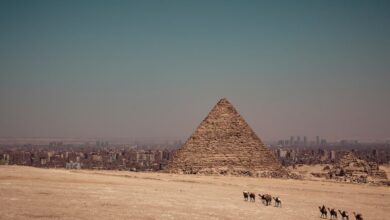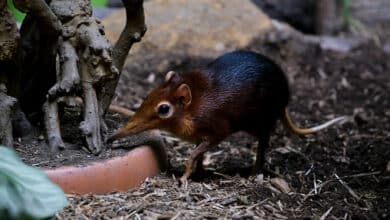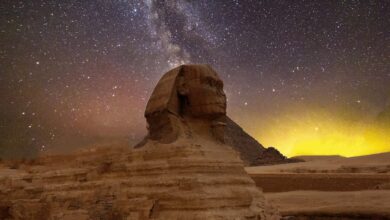The Permian Period
What Is the Permian Period?
The Permian Period represents an important transition in the geological timeline, connecting the Paleozoic and Mesozoic Eras.
This period lasted from 298.9 to 251.9 million years ago, spanning around 47 million years. The Permian saw the formation of the supercontinent Pangaea, which fundamentally impacted global climate patterns, biodiversity, and ecosystems.
On land, forests, swamps, and arid deserts shaped the terrestrial landscape. Permian oceans were filled with diverse marine invertebrates and fish. On land, mammal-like reptiles and pelycosaurs emerged as the dominant vertebrates.
But the period ended with the Permian mass extinction event, wiping out over 90% of marine species and 70% of terrestrial life. This event essentially hit the reset button for complex ecosystems on Earth.
The Permian World and Formation of Pangaea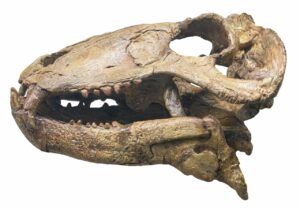
The Permian Period makes up the latter part of the Paleozoic Era. This geological timeframe saw the fusion of all major continental landmasses into the supercontinent Pangaea. The amalgamation of Pangaea had profound implications for Permian climates, plants, animals, and general geology.
Continental Drift Leading to Pangaea
Throughout the Carboniferous and early Permian, Earth’s landmasses were moving towards each other due to plate tectonics. The larger continental plates slowly collided and merged over millions of years during the Permian.
Formation of Laurasia and Gondwana
The northern continents, including North America, Greenland, and Europe, fused together to form Laurasia. The southern landmasses, including Africa, India, Australia, Antarctica, and South America, joined into Gondwana.
Final Assembly of Pangaea
In the late Permian, around 260 million years ago, the Laurasian and Gondwanan supercontinents fully merged to form the complete Pangaea supercontinent. All major landmasses were now connected in one enormous global landmass surrounded completely by the Panthalassic Ocean.
Impacts on Climate and Geology
Pangaea’s formation directly shaped Permian climate conditions and geology:
- The interior of Pangaea became increasingly dry and arid due to a lack of moisture transport from ocean evaporation.
- The collision of plates caused substantial mountain building along the edges of Pangaea.
- Continental merge allowed terrestrial species to spread and disperse more widely across connected lands.
- Reduced shorelines meant coastal marine ecosystems declined in diversity and extent.
- Permian plants influenced global carbon dioxide and oxygen levels through photosynthesis.
So the convergence of all continents into Pangaea had lasting impacts on climate systems, sedimentation, and vegetation patterns during the Permian Period. The unified supercontinent determined the overarching geography of terrestrial and aquatic ecosystems.
Climate and Biomes of the Permian World
The Permian Period was typified by globally high temperatures and increasing aridity, especially nearing the end Permian. Continent-wide hot and dry conditions dominated, though Permian biomes still hosted complex ecosystems.
High Temperatures and Aridity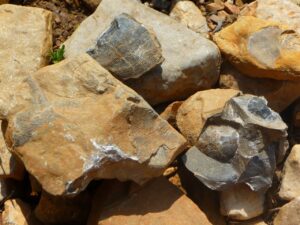
Multiple lines of geological evidence point to extremely high global temperatures during the Permian:
- Oxygen isotope ratios from fossils indicate high paleotemperatures.
- Sedimentological data shows evidence of extensive evaporation.
- Climate models suggest CO2 levels may have been up to 11 times modern levels.
Increasing aridity was widespread across Pangaea’s massive interior, far from moderating ocean influences:
Development of Deserts
The hot temperatures caused high rates of evaporation from inland seas and rivers. This led to the progression of arid desert conditions across much of Pangaea during the Permian, especially in the late Permian.
Mega-Monsoons
In other areas of interior Pangaea, intense wet and dry seasonal variations developed, leading to mega-monsoons with prolonged periods of heavy rain followed by extensive droughts.
Polar Ice Cap
Ironically, late Permian cooling eventually led to the onset of an ice age that developed over southern Pangaea. So polar regions were cold, while lower latitudes experienced desertification.
Terrestrial and Aquatic Ecosystems
Despite the heat and aridity, complex ecosystems evolved and flourished on land and in the Permian oceans:
Terrestrial Plants and Animals
- Massive swamp forests with giant tree ferns and horsetails grew across equatorial Pangaea.
- More arid scrublands and deserts hosted early gymnosperms like conifers and seed ferns.
- Early therapsids and pelycosaurs dominated Permian terrestrial fauna and demonstrated mammal-like adaptations.
Marine Invertebrates
- Brachiopods, bryozoans, mollusks, and fusulinid foraminifera inhabited Permian oceans.
- Trilobites went extinct at the end of Permian, along with tabulate corals.
So even with global warming and drying, diverse plant and animal life populated the varied Permian biomes.
The Permian-Triassic Mass Extinction Event
The Permian Period ended with the largest and most devastating mass extinction event in Earth’s history. This catastrophic event reshaped global biodiversity and evolutionary trajectories.
Scope of the Permian Extinction
The Permian-Triassic extinction event wiped out most complex marine and terrestrial ecosystems:
- 70% of terrestrial vertebrate species went extinct by the end of the Permian.
- Up to 96% of all marine species were eliminated from the global ocean.
- Forest ecosystems across Pangaea essentially collapsed.
Causes of the Permian Mass Extinction
Numerous theories have been proposed to explain possible causes:
- Global warming – increased temperatures and decreased oxygen may have made oceans uninhabitable.
- Volcanic activity – eruptions may have triggered climate change and toxic effects.
- Asteroid impact – a large impact could have caused cataclysmic effects.
- Methane release – melting methane hydrates could have caused a runaway greenhouse effect.
The exact causes continue to be studied, but most evidence points to one or more of these global catastrophes.
Impacts on Future Evolution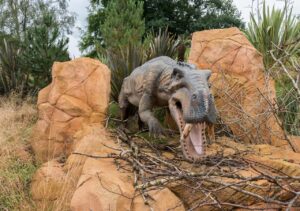
This decimation of Permian species forever changed the course of evolution:
- Cleared the way for new types of organisms to radiate and thrive.
- Removed dominant Paleozoic plants and animals from global ecosystems.
- Allowed for diversification of mammal predecessors and archosaur reptiles.
- Set the stage for dinosaurs to take over in the following Triassic Period.
So the mass extinction essentially wiped the slate clean for new ecosystems to develop, shaping all future biodiversity.
Significance and Legacy of the Permian Period
The Permian Period represents an important transitional phase in the development of life on Earth. This era had lasting impacts on biodiversity long after it ended.
Shaping Future Evolution
The ecological changes triggered by the Permian fundamentally shaped the trajectory of vertebrate evolution:
Diversification of Survivors
The synapsids and archosaurs that survived the mass extinction rapidly diversified into new species adapted to the vacant ecological niches.
Rise of the Dinosaurs
Without the Permian extinction, dinosaurs would likely not have been able to dominate during the Mesozoic Era. The extinction allowed them to diversify and fill terrestrial roles.
Development of Mammals
The evolution of mammal-like reptiles and therapsids laid the grounds for later mammal success and radiation.
So the Permian extinctions enabled major new evolutionary avenues to open up among reptiles and proto-mammals.
Permian Fossil Records
Numerous well-preserved fossils from the Permian provide insights into paleoenvironments, climate shifts, and evolutionary trends:
Plant and Animal Biodiversity
Thick coal deposits and fossil plants showcase Permian swamps. Diverse animal fossils highlight complex aquatic and terrestrial ecosystems.
Geographical Range Data
Plant and animal fossils show geographical ranges and dispersal across Pangaea after continents collided.
Extinction Insights
Fossils document how the mass extinction unfolded and impacted different organisms in different locations.
Evolutionary Transition
Synapsids with increasingly mammal-like traits demonstrate an important transition toward mammals.
These fossil finds allow paleontologists to reconstruct Permian biomes, climate conditions, and evolutionary adaptations in great detail.
Understanding Earth’s History
The Permian represents a key chapter in Earth’s geological history:
Climate Change Lessons
Rapid global warming and aridification during the Permian provide analogs for modern climate change.
Plate Tectonics
Continental drift patterns demonstrate supercontinent cycles that continue today.
Mass Extinction Impacts
Effects of the Permian extinction event reveal how wiping out species resets evolution.
So the Permian shows how climate variation, continental drift, and mass extinctions can transform biodiversity and habitats over timescales of millions of years.
Notable Permian Period Fossil Finds
Many major paleontological discoveries have been made from Permian strata around the world:
Terrestrial Vertebrate Fossils
- Synapsids – Many fossils of pelycosaurs like Dimetrodon and herbivorous therapsids showcase the rise of mammal forerunners.
- Reptiles – Diverse Permian reptiles are represented, like mesosaurs, pareiasaurs, and proto-turtles.
- Amphibians – Eryops and other stereospondyls demonstrate Permian tetrapod diversification in aquatic habitats.
Permian Flora Fossils
- Tree species – Petrified wood reveals lush swamp forests containing giant horsetails, cordaites, and club mosses.
- Glossopteris flora – Impressions of glossopteris leaves characterize Permian plants across southern Pangaea.
- Fungal remains – Fossilized Permian fungi shed light on decomposition and nutrient cycling.
Invertebrates and Trace Fossils
- Trilobites – Declining trilobite diversity reflects impacts leading up to the mass extinction.
- Ichnofossils – Burrows, footprints, and traces detail complex Permian terrestrial and marine ecosystems.
These major finds showcase the biodiversity that existed through the Permian and was ultimately lost at the end of this period.
Modern Significance of the Permian World
Though extinct long ago, Permian organisms impacted ecology on a deep evolutionary scale. The Permian also provides important perspectives on modern environmental changes.
Shaping Modern Ecosystems
- The rise of therapsids and archosaurs during the Permian set the stage for later mammal and bird diversification.
- Loss of forests may have lowered oxygen levels over the long term, influencing animal evolution.
- Extinctions removed entire groups like trilobites that dominated Paleozoic oceans.
Lessons for Today
- Rapid global warming during the Permian represents an analog for current climate change.
- The Permian extinction illustrates the risks of mass biodiversity loss due to environmental changes.
- Recovering complex ecosystems after mass extinctions takes millions of years.
Ongoing Research
- More accurate dating of the Permian boundary helps pin down the timing of extinction events.
- Analyzing Permian fossil plants and animals provides clues to the causes of the mass extinction.
- Locating new Permian fossil sites can reveal species not known from limited existing finds.
So the Permian represents a valuable example of how prehistoric climate shifts and biodiversity loss relate to modern ecology and conservation.
Facts About the Permian Period
The Permian Period was the last period of the Paleozoic Era. It spanned 47 million years, from 298.9 million years ago to 251.9 million years ago. Here are some key facts about this important geological time period:
Climate and Geography
- The climate was generally hot and dry during the Permian Period, especially in the interior of the supercontinent Pangaea. This led to the spread of arid deserts and red bed sediments.
- Pangaea was a supercontinent that contained most of Earth’s landmass. It stretched from pole to pole and allowed species to spread across the entire planet.
- Towards the end of the Permian, Pangaea began to break apart into Laurasia and Gondwana. This continental rifting gradually formed the Atlantic Ocean.
Life and Mass Extinction
- Early Permian life was similar to late Carboniferous flora and fauna. Common plants included lycophytes, horsetails, ferns, and seed ferns.
- The climate shift and continental drift caused a turnover in species during the Middle Permian. Reptiles and synapsids flourished while amphibians declined.
- The Permian ended with the largest mass extinction event in Earth’s history, wiping out 70% of terrestrial and 96% of marine species. Climate change and vulcanism likely contributed.
Land Animals
- Synapsids, often called “mammal-like reptiles,” were the dominant land animals. They included dimetrodons, edaphosaurs, and bulky herbivores like pareiasaurs.
- Therapsids appeared in the Middle-Late Permian, eventually giving rise to the first mammals near the Permian-Triassic boundary.
- Insects diversified rapidly, developing early predecessors of dragonflies, grasshoppers, and beetles. The first scorpions also appeared.
Marine Life
- Marine life flourished in Permian seas, including brachiopods, bryozoans, sharks, bony fish, ammonoids, eurypterids, and trilobites.
- Nautiloids were still common and widespread, though ammonoids were diversifying and becoming more prominent. Squid-like belemnites first appeared.
- Reefs built by sponges, crinoids, fusulinids, corals, and algae covered 1.6 million square miles, the largest ever recorded.
Plants
- The hot, seasonal climate supported drought-resistant plants like conifers, seed ferns, and the first large trees such as walchian conifers.
- Glossopteris flora dominated southern continents. This distinctive Permian gymnosperm had tongue-shaped leaves and is useful for correlating strata across Gondwana.
- Extensive swamp forests contributed to the formation of large coal deposits, most notably in what is now China and Russia.
Geology & Fossils
- As Pangaea assembled, massive deposits of terrestrial sediment accumulated, forming red beds like the Permian Coconino Sandstone.
- Permian marine deposits transitioned from widespread carbonates to evaporites as the climate grew hotter and drier. The Zechstein deposits of Europe are famous.
- Oil and gas reserves from Permian source rocks make up over 80% of the world’s petroleum reserves. The Permian Basin in Texas is an important resource.
- Abundant Permian plant fossils include impressions, molds, permineralizations, and casts. Vertebrate fossils include complete skeletons and trace fossils.
The Permian Legacy
- Extinction of so many marine and land species opened ecological niches for the diversification of reptiles, plants, and, ultimately, dinosaurs.
- Continental fragmentation created isolation that stimulated evolution and endemism during the Mesozoic. The modern layout of continents began in the Permian.
- Permian sediments became source rocks for fossil fuels that now power the modern world. The Permian world helped set the stage for human civilization.
Important Permian Sites
- The Permian Basin in the southwestern United States contains incredibly well-preserved Permian strata and prolific fossil beds across Texas and New Mexico.
- The Robledo Mountains near Las Cruces, New Mexico, have extensive outcrops of the Permian Abo Formation. This unit preserves numerous vertebrate fossils, including captorhinids, pelycosaurs, and proto-mammals.
- The Glass Mountains in west Texas expose over 5,000 feet of Permian shelf carbonates. Fossils of brachiopods, ammonoids, and reef-building organisms are common in units like the Road Canyon Formation.
- The Guadalupe Mountains reveal a complete Permian section, spanning deeper water to shallow reef environments. The Capitan Reef here is one of the most studied fossil reef complexes, containing diverse sponges, bryozoans, and other marine life.
The Permian was a turbulent but formative time in Earth’s history. Its climate shifts, continental drift, and pivotal extinction event cleared the way for the rise of the dinosaurs and the world we know today. The Permian left an enduring legacy that shaped all later geological time periods.
Conclusion
The Permian Period was a pivotal time in Earth’s history that shaped vertebrate evolution and ended with the largest mass extinction event ever. Continental drift during the Permian led to the formation of the supercontinent Pangaea and associated climate changes.
Despite global warming and aridification, complex terrestrial and aquatic ecosystems proliferated. The rise of therapsids and synapsids paved the way for mammal diversification later on. But the catastrophic Permian extinction then cleared the slate for archosaurs and early mammals to radiate in the Triassic and beyond.
The Permian extinction essentially set the stage for dinosaurs and modern vertebrates by removing dominant Paleozoic groups. Fossil evidence of Permian organisms helps illustrate ecosystem structure and climate conditions during this transitional geological period.
Even today, the Permian offers critical lessons on how prehistoric climate change and biodiversity loss relate to modern ecological issues.

